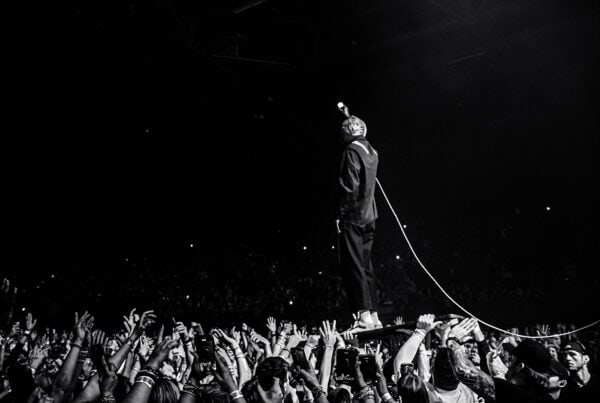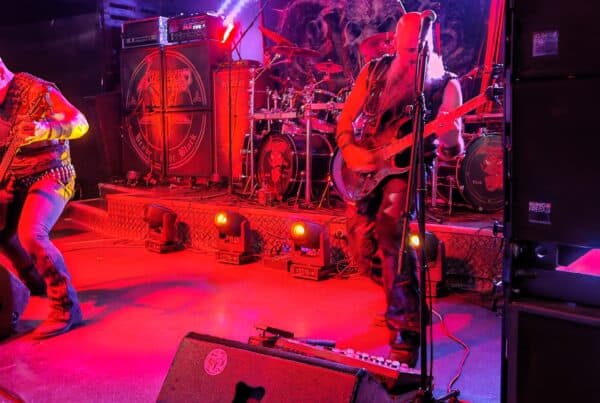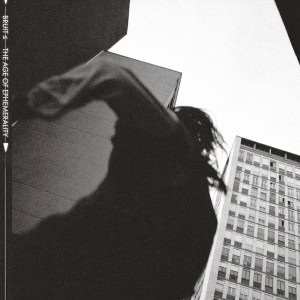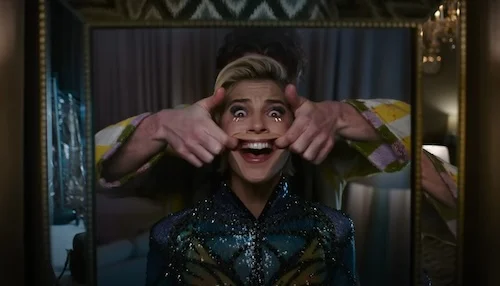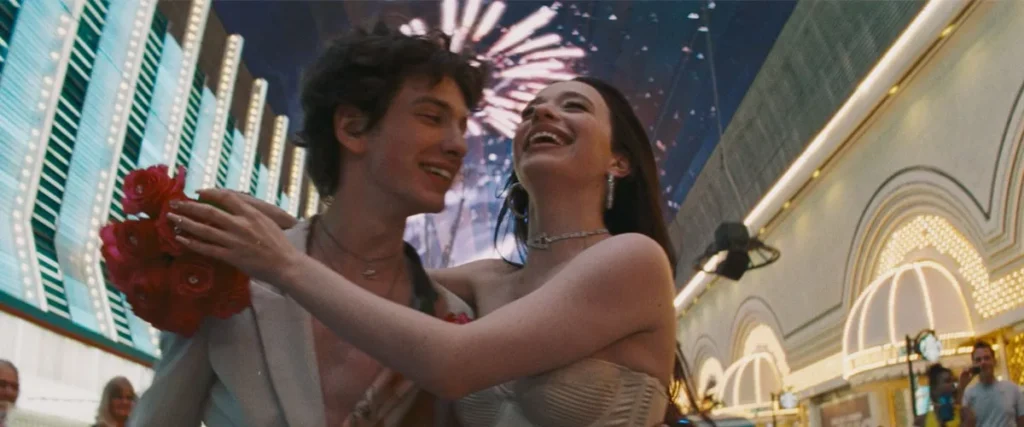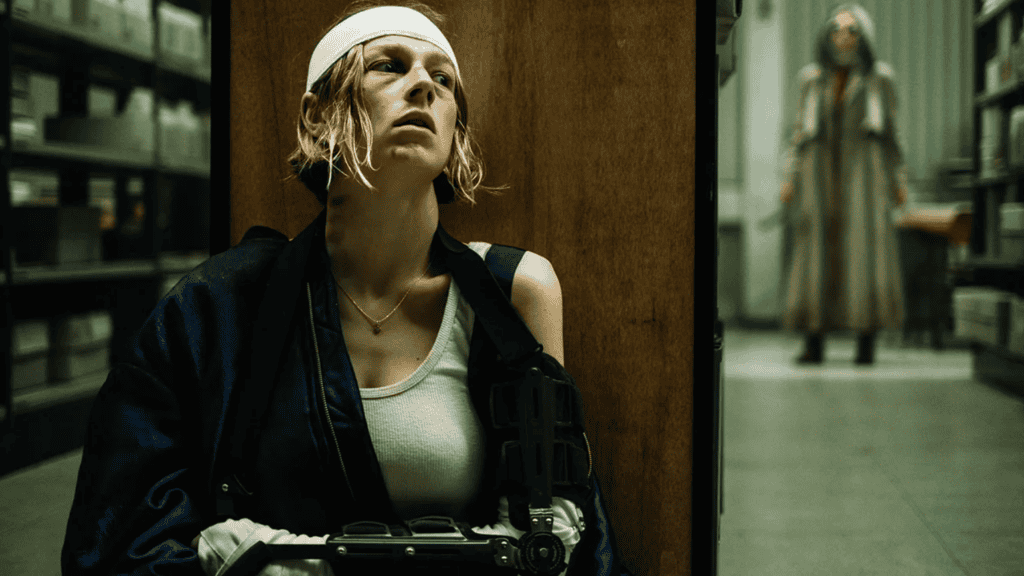Through strikes and delays, ‘Dune: Part Two’, the long awaited follow up to Denis Villeneuve’s 2021 science fiction epic ‘Dune’, has finally crashed into orbit and is taking the whole planet by storm.
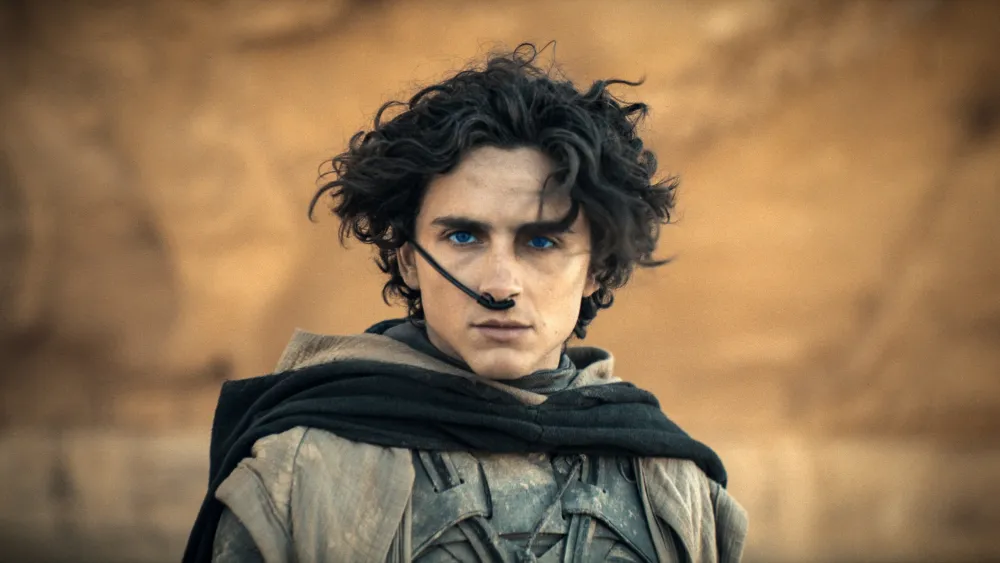
Villeneuve’s long-awaited dream of adapting this almighty book, has come full circle from when he was a 13-year-old boy reading Frank Herbert’s 1965 novel for the first time. In many interviews Villeneuve has described making these films just for himself, and the passion on display in Part One and Part Two is very much relevant.
Across the 167-minute runtime of this film, we see grander set pieces including worm-riding Fremen, caverns full of the masses and an imposing arena sequence shot entirely with thermal cameras. It seems as if our generation has been waiting for the next defining series epic that many see reminiscent of Lord of the Rings and Star Wars, and these Dune adaptations might just be the answer.
Whilst this film is just the second half of a story, we are met with many new beautiful and menacing faces, that book fanatics have been eagerly awaiting. We open with new powerful figures of Emperor Shaddam IV, played by the ever so wise Christopher Walken, and his character’s daughter Princess Irulan, played by the stunning Florence Pugh. They serve as mighty pawns in this second part, and whilst both have limited screentime, they play their respective parts well, stealing the majority of the scenes that they feature in.
However, the most prominent new addition to this tale was the devilish playboy that is Feyd-Rautha, played to menacing perfection by Austin Butler. From his introduction in that arena sequence to the climatic ending duel, his presence ceases to exist in every scene he’s in. Butler’s snake-like voice, monstrous eyes, and pale white look, leave him in balance as one of the most memorable on-screen villains for some time, even though he could’ve been there for even longer than he was.
From fresh faces to returning ones, our main leads deliver the best performances of the film with Timothée Chalamet helming the most dark and commanding performance of his entire career. His evolution as a character and actor across both parts is handled to perfection, culminating in a powerful switch up by the last act. Alongside Timothée, Zendaya gives us a more emotionally challenged performance compared to her characters stance in the book, which meant we saw her genuine capabilities as one of the young pioneers of Hollywood actresses. She commands the brilliantly woven themes of politics and religion, as we delve deeper into those aspects in this second part.
Villeneuve builds on all these key ideas from part one brilliantly through our dynamic leads, by evolving the key conflicts that the source material presents. Our lead chemistry forms into a formidable romance that does move quickly but isn’t one that ever feels forced or in doubt, solely down to how convincing Chalamet and Zendaya are.
One couldn’t go without mentioning Rebecca Ferguson, when talking about performances in this film, because she arguably is the most memorable of all of them. Her role as the rapidly changing Lady Jessica takes such an immediate switch in the beginning of this film and she exhibits this change right from the second it happens. It’s genuinely terrifying. Villeneuve and Ferguson take the character down this manipulating and gaslighting road of religious control that Herbert himself would be proud of. The ensemble of these films are the biggest standout and is some of the best book to screen casting in some time. You really could not imagine anyone else playing these characters.
On a more technical note, Villeneuve and his cinematographer, Greig Fraser, continue to build on this monumental scale of world-building. We see more sweeping landscape shots of the dunes of Arrakis, from bird’s eye shots of worms riding into storms to choosing to open the film in an orange drenched eclipse, reminiscent of one sequence in Villeneuve’s ‘Blade Runner 2049’. What is most striking about this film, is the way he distinguishes between the worlds that we visit. Arrakis is a vast desert planet with sand flowing all around. Fraser conveys this in various colours, including cuts to harsh whites, oranges and golden sunsets.
In comparison we see Giedi Prime, the home world of House Harkonnen, drenched in a black sun that is achieved by this genius technique of using a thermal camera. The harsh black metals that this planet is covered in are a perfect opposite to the smooth flowing sands of Arrakis and a brilliant example of visual storytelling. These filmmaking advances is Villeneuve showing off in just how far he has come.
Whilst there is a lot of praise to give to this film for its sheer scale and achievement in filmmaking, some flaws lie in its final edit. To put it plainly, this film needed to be longer. We move a lot more quickly through the story here than we do in the first part, and that ends up leading to a slightly rushed narrative by the third act. From what we see, it is pure genius, but it’s more down to what we don’t see that needed to be there.
In an ever-evolving generation, it seems that we live in a world in where people don’t like long films and thus attention spans are being shortened. Maybe this is what they feared? Whilst an extra 30-45 minutes would have put it at a mighty 200 minutes, it would have benefited in giving us more meat into the final act. It felt as if our character arcs were moving too quickly towards the end. The editing up to this point was moving quickly, but it never felt like we were skipping over key points. It’s a minor complaint for one of the best sci-fi films of the century. The final edit for Part One flows better and feels more well-rounded as an adaptation. However, the highs of Part Two blow the roof off filmmaking boundaries in the most jaw-dropping way possible. A real landmark for the modern blockbuster.

